Winter paints Minnesota’s waterfalls into shimmering cathedrals of ice, and the photos can look like portals to another world.
That beauty hides fast-changing conditions, thin ice, and hazards that do not announce themselves.
If you are tempted to step off the trail for a closer look, this guide reveals what the camera never shows.
Read on for practical, current insights to enjoy the spectacle safely and responsibly.
Beneath the Gloss, Water Still Moves
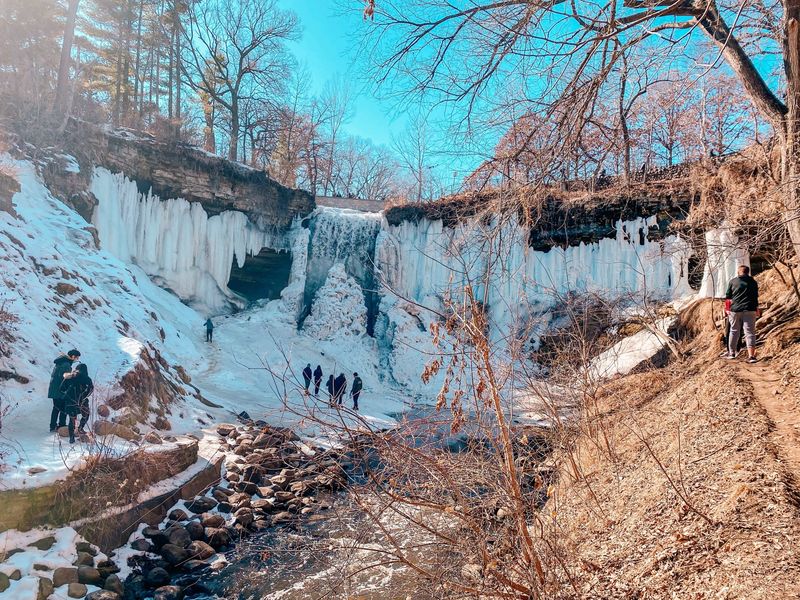
Visiting the frozen waterfalls in Minnesota can feel magical, but when tourists step beyond the safety zones and attempt climbing or walking under ice formations, the risks climb fast. Below is a breakdown of the major hazards, why they happen, and how to stay safer.
Ice instability and hidden water flow are the first surprise. What appears as solid ice may be very deceptive. At Minnehaha Falls in Minneapolis, park officials strongly warn against going behind the falls or walking on the frozen pool beneath, because moving water continues underneath the ice and the ice can crack unexpectedly.
Reports covered by local outlets describe incidents where bystanders were hit by falling ice or dropped through fragile crust. The physics are simple, water keeps flowing, heat radiates from groundwater and rock, and freeze patterns become laced with voids.
Even long cold snaps cannot guarantee uniform strength. If you value your safety, keep to designated overlooks and bridges, read posted advisories on site, and treat the surface as suspect unless a qualified authority verifies stability. Minnesota’s winters can be stern, but the ice at a waterfall lives by its own rules.
The Footing Problem No One Sees Coming
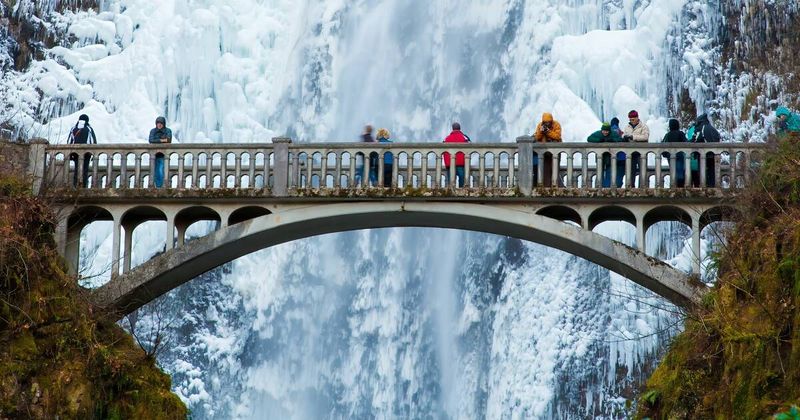
Slippery terrain and fall risk escalate as you descend toward any frozen cascade in Minnesota. The approaches to frozen waterfalls often involve steep, icy slopes, rime-covered rocks, and hidden hazards like thin ice or snow-covered drop-offs.
At Minnehaha, officials say that parts of the gorge that are safe in summer become extremely treacherous in winter. Broadcast reports and park alerts note injuries from slips near the base where traction vanishes without warning.
Micro-spikes or crampons help on designated trails, yet they cannot make closed zones safe. Snow can act like ball bearings over bedrock, and a small slide can accelerate into an uncontrolled ride. Rescuers must work carefully on the same slick angles, so a single misstep can multiply the risk for everyone involved.
Choose cleared pathways, keep poles handy for stability, and gauge your limits early. If a route looks polished or wind-scoured, assume it is worse than it appears.
The best photos usually come from stable viewpoints anyway, where you can frame the gorge, footbridge, and frozen curtain without testing gravity. Minnesota’s parks want you to return in one piece, and so do the people hiking beside you.
Falling Ice Is Not a Snow Globe
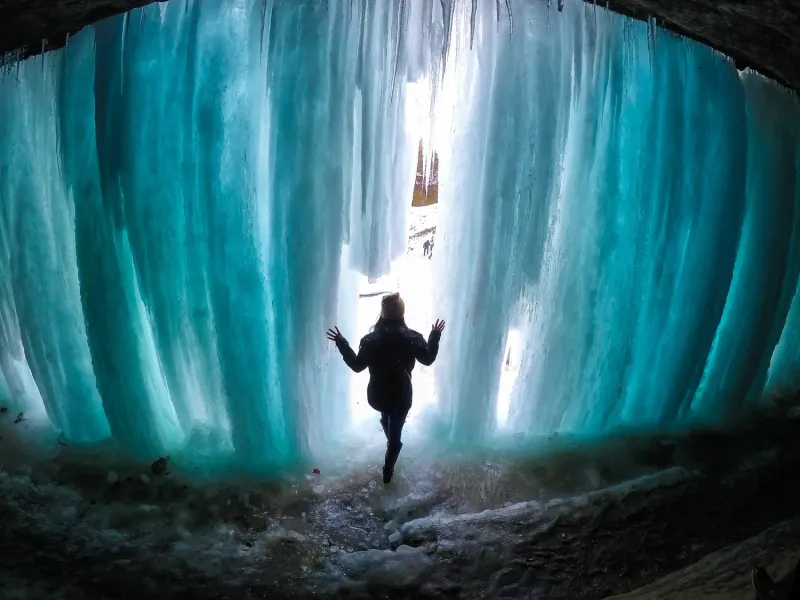
What makes frozen falls enchanting also turns them into overhead hazard zones. Icicles grow, fuse, and detach with tiny temperature shifts, sun glare, or vibrations. News accounts have documented injuries from ice chunks breaking off near the base of Minnehaha Falls, including a visitor struck unconscious by falling ice.
Those fragments descend without warning and can travel farther than expected, bouncing along the slope. Helmets reduce risk for trained climbers in permitted areas, but casual visitors standing beneath a lip cannot predict the moment of failure.
The safest choice is distance, ideally from the bridge above or the designated overlooks that park staff clear. If you hear cracking, popping, or a hard clink on the ice, move away immediately. Photographers can switch to longer lenses or crop from a safer stance.
Children and pets should stay close and away from any alcove or cave-like recess. Minnesota winter scenes are dramatic enough from the trail, and your memory will be sharper when you avoid the blast radius of falling ice. Treat the entire base of a frozen waterfall as a construction zone roofline with loose material overhead.
Not a Public Ice-Climbing Gym
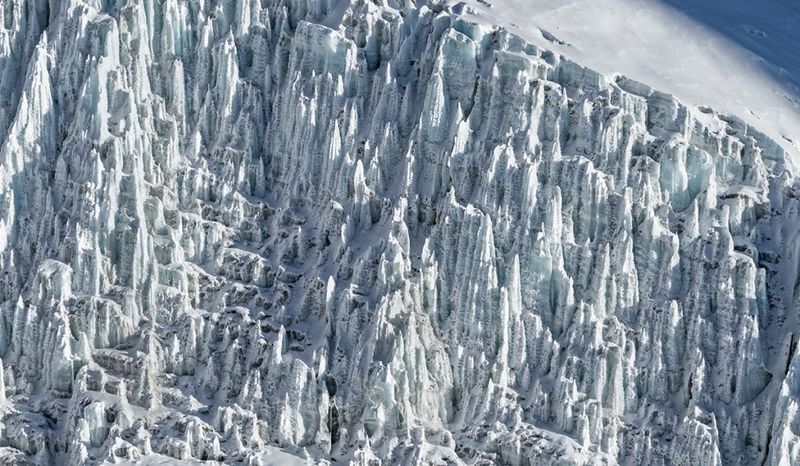
Unregulated climbing and lack of proper equipment create a dangerous mix at frozen waterfalls. Some tourists treat these frozen falls like ice-climbing playgrounds without realizing the extra gear, skills, and safety checks required.
The general guide to ice climbing warns that the condition of the ice, including thickness, bonding, and structure, must be evaluated, and many tourists lack this knowledge. Helmets, crampons, ice screws, harnesses, ropes, belay devices, and partner protocols are part of the baseline, not add-ons.
Even then, permitted climbing areas are chosen for their access plans and escape options, not simply because they look pretty. At Minnehaha Falls, access to the base and behind the curtain is restricted, so climbing there is not allowed.
If you want instruction, connect with accredited guides who operate in legal locations and check land manager rules before you gear up.
Respect closures and understand that social videos rarely show the risk management behind the scenes. Minnesota has a proud winter culture, but it is not a free pass to experiment on fragile ice in a city park.
Closed Means Closed, Even for a Quick Photo

Legal access and the rescue burden are not abstract ideas. At Minnehaha Falls the base of the falls and behind the ice curtain are restricted year-round.
Trespassing into these areas not only puts you at risk but also burdens emergency services and can lead to fines. Local coverage has highlighted how rescues require ropes, technical teams, and careful coordination on icy slopes.
Every callout exposes responders to the same dangers that trapped the visitor. Officials have stated that sliding into the gorge or ducking fences endangers police and fire crews. The principle is straightforward, follow posted signs and barriers, and stay in open zones designed for viewing.
These spots exist to give you the spectacle without the scramble. Minnesota parks balance access with safety, and those rules protect the resource too. A quick shortcut does not save time if it leads to a ticket or a rescue.
Why the Risk Keeps Growing Each Winter
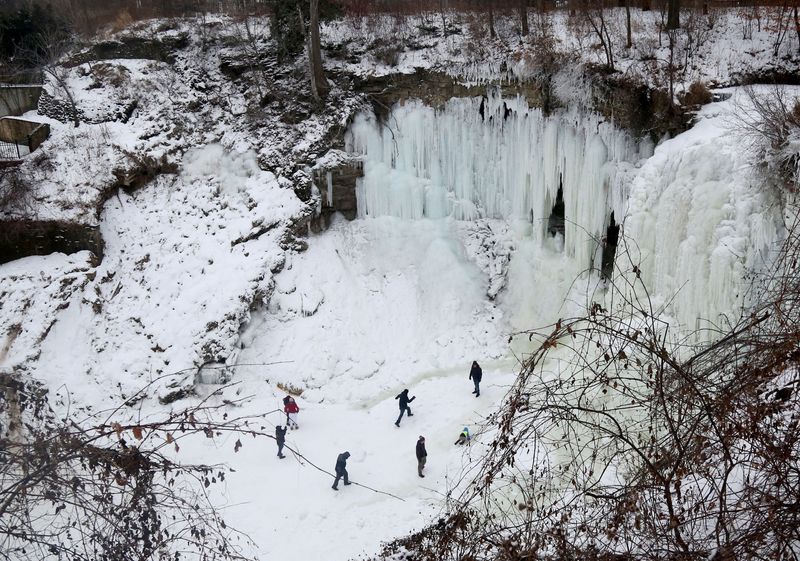
Why it is a growing issue can be traced to three converging forces. Striking, shareable images drive people toward dramatic angles, which often lie in closed zones or unstable areas. Many visitors assume frozen means safe, a misread that ignores the unique dynamics of a waterfall where water moves under the ice.
Weather variability adds another layer, with freeze and thaw cycles creating hollow shells, weight imbalances, and sudden failures. Local stories and park statements in Minnesota repeat the same refrain, the crowd that sees the best image online often tries to get closer in person.
Smart planning reverses that trend. Choose approved overlooks, check recent conditions through official channels, and learn how warm spells affect ice adhesion.
If you want variety, visit at different times of day for changing light, not different illegal angles. By treating waterfalls as living systems, you will leave with safer photos and more reliable memories.
Your Winter Traction and Layer Plan
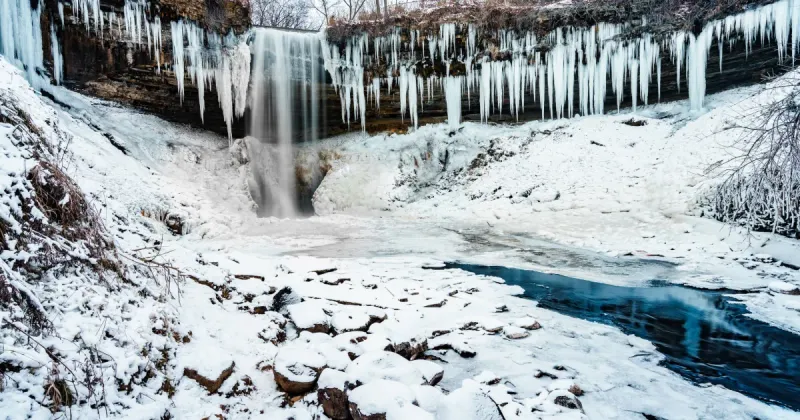
Safety checklist thinking helps before you even park the car. Before you venture near a frozen fall in Minnesota, stay on marked trails and heed posted closures and warnings.
Assume ice near running water is unstable unless verified by an expert. Use proper winter traction such as micro-spikes, warm layers, and carry a helmet if climbing in permitted areas with proper training.
Check local weather and recent freeze-thaw history. Let someone know your plan and estimated return. Respect closures, if an area is fenced off, treat it seriously.
Add small items that make a big difference, headlamp, spare gloves, and a map screenshot in case your phone loses signal. Pack patience as conditions may slow your pace.
This minimal kit and a conservative mindset will turn a risky dash into a calm, scenic outing. Minnesota winter trails reward those who prepare and respect the setting.
Where to Stand for the Best Safe View
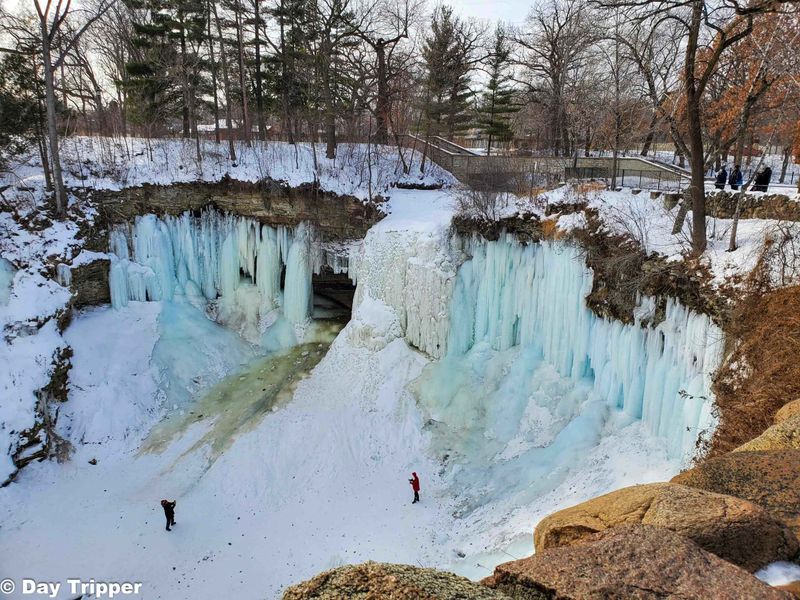
Safe viewing locations deliver the drama without the gamble. At Minnehaha Falls, park officials and local reports point to the footbridge above the falls and the designated overlooks near the pavilion as the primary places to watch the ice.
These platforms keep you out of the fall line while framing the gorge for wide shots and portraits. The bridge offers a straight-on look at the frozen sheet, while the overlook captures the side profile and the layered shelves that build along the cliff.
In heavy snow, crews often clear approaches to these points first, so traction is better than on informal tracks. If you want a quiet moment, visit early morning on weekdays when foot traffic is light.
Bundle up, keep your camera strap secured, and avoid leaning over railings. Minnesota’s urban parks are designed to be enjoyed in every season, and these vantage points show why the frozen falls are famous without courting the hazards below.
Respect the Rescue Line
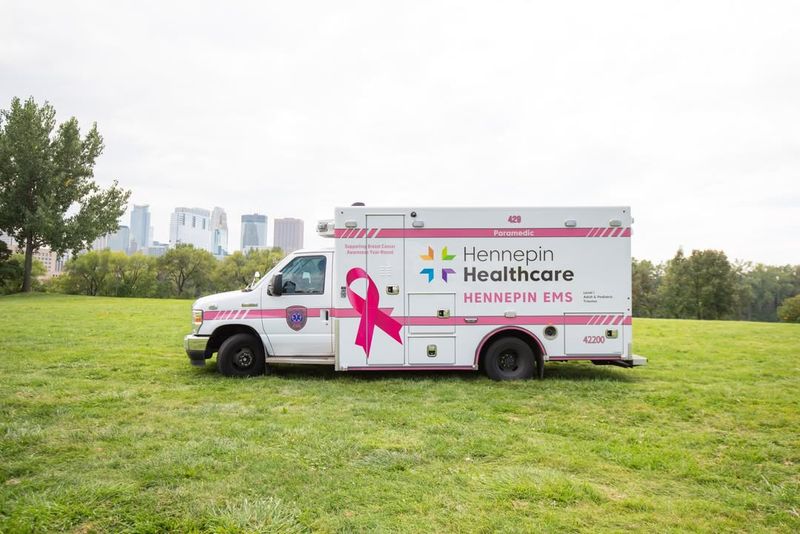
Endangerment of emergency responders should factor into every choice near frozen falls. When visitors climb into closed bowls or stroll behind ice curtains, rescue plans become complex.
Teams must negotiate icy stairs, rig systems, and work near unstable walls. Park officials in Minnesota have repeatedly urged the public to stay clear of restricted zones to protect both visitors and responders.
A quiet decision to stop at the sign can prevent an entire evening operation. If you see someone venturing into danger, alert staff rather than following them.
Clear descriptions help responders stage quickly, and staying out of the hazard zone keeps the scene manageable. Think of it as community risk reduction in action.
Your restraint reduces exposure for firefighters, rangers, and medics who already accept winter’s challenges to keep everyone safe.
Keep Minnesota’s Natural Stages Intact
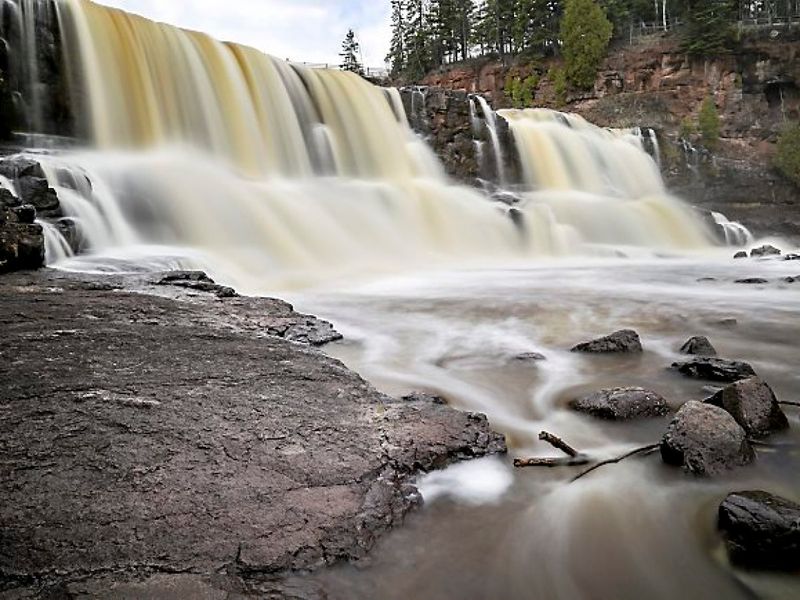
Preserving the setting is part of traveling well. Overcrowding, shortcut paths, and trampling near fragile edges scar soil and disturb vegetation that stabilizes the gorge.
Restricting access helps protect the ice formations themselves, since footsteps and vibration can accelerate cracks. Officials in Minnesota promote designated routes for exactly this reason, they concentrate traffic where the landscape can handle it.
Choose the built overlooks, pack out trash, and give room to wildlife moving along the river corridor. If you want variety, explore other winter-safe park features like the stone bridges, open meadows, and maintained paths that offer texture and light for photography.
The frozen falls will remain the showpiece as long as visitors treat the scene like a theater, observe from the balcony, not the stage. That care keeps the magic alive for the next snowfall and the next traveler.
Plan the Story, Not the Stunt
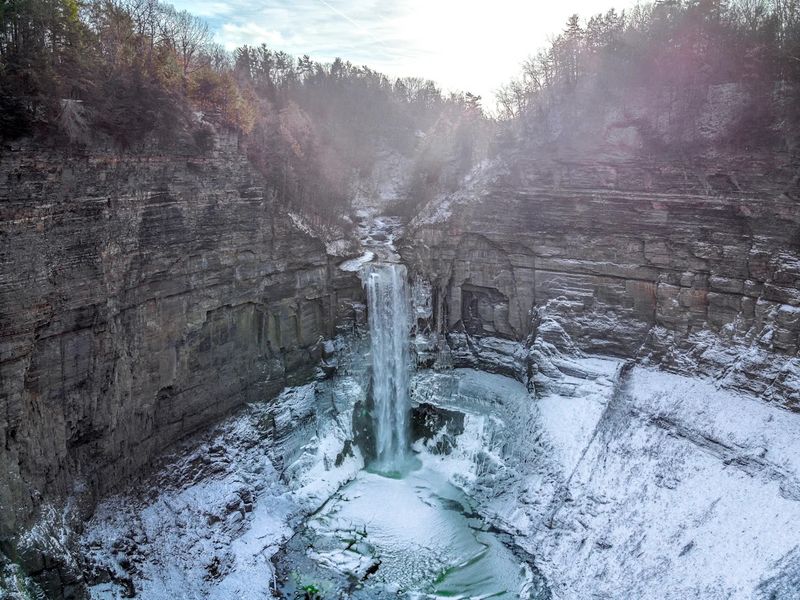
Travelers who leave with the best memories usually plan a narrative rather than chase the riskiest angle. Build your visit around light, composition, and context instead of proximity.
Start at the pavilion area, note the viewing platforms, then move to the footbridge for a second perspective and finish with a wide skyline frame from the upper trail.
Check recent advisories from Minneapolis Park and Recreation Board before you go, plus local weather and daylight windows.
If conditions look sketchy, pivot to another winter landmark, such as the Mississippi River overlook points or a nearby urban trail system, and return when it is firmer.
By approaching the falls with a storyteller’s eye, you will capture Minnesota winter in layers, architecture, ice, forest, and community. The spectacle stays in front of you, and the hazards remain behind the barriers where they belong.
Dear Reader: This page may contain affiliate links which may earn a commission if you click through and make a purchase. Our independent journalism is not influenced by any advertiser or commercial initiative unless it is clearly marked as sponsored content. As travel products change, please be sure to reconfirm all details and stay up to date with current events to ensure a safe and successful trip.